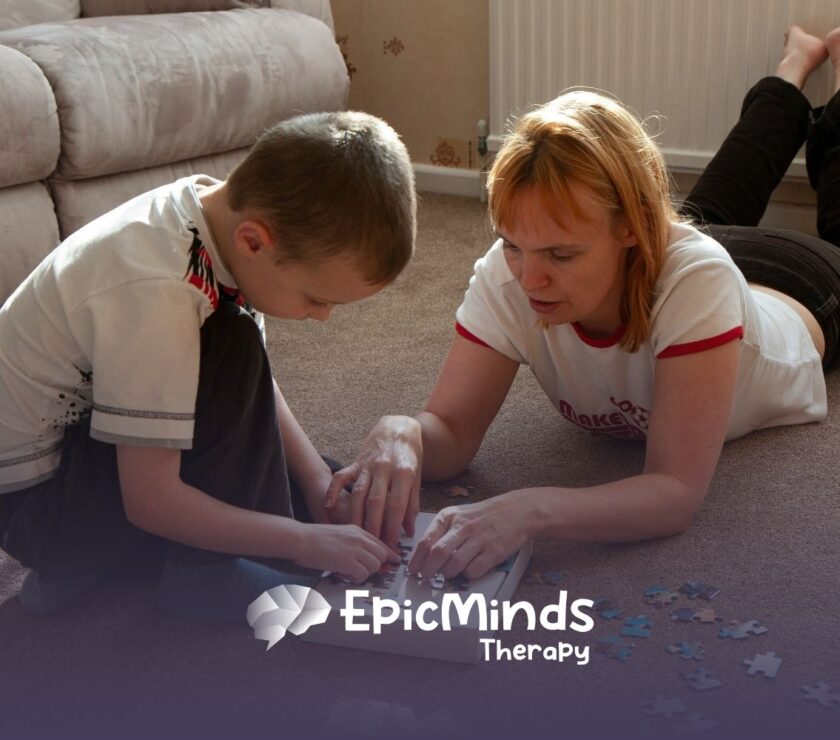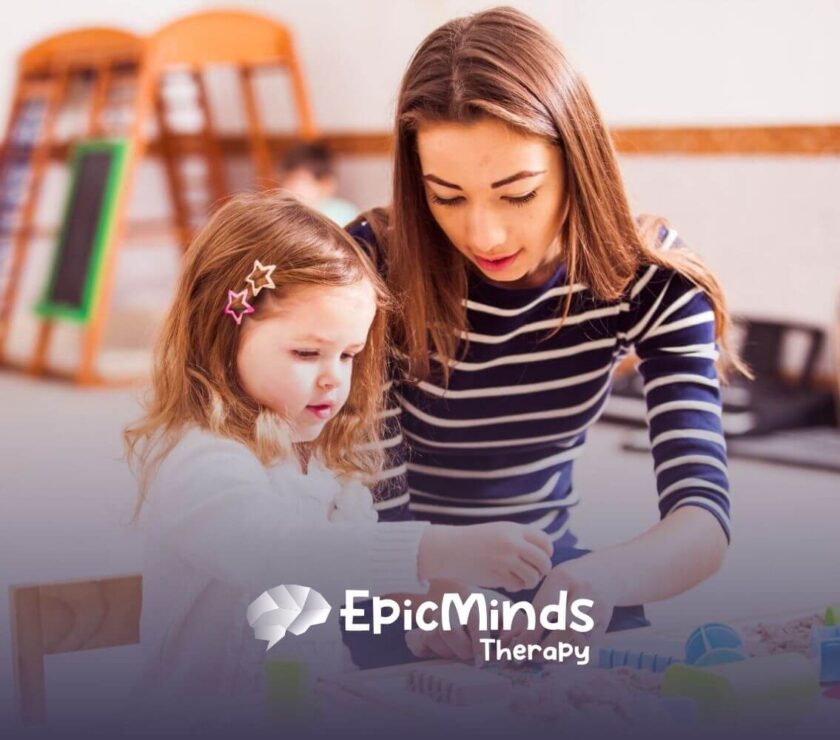Applied Behavior Analysis (ABA) therapy is a scientifically backed approach designed to support individuals with autism spectrum disorder (ASD). By focusing on improving communication, social skills, and adaptive behaviors, ABA therapy techniques help children thrive in everyday situations.
This guide breaks down core techniques, practical applications, and how families can reinforce progress at home, all grounded in evidence-based practices.
Foundations of ABA Therapy
ABA operates on principles of behavior modification, using systematic interventions to encourage positive behaviors and reduce challenging ones. Key elements include:
- Data-driven decisions: Therapists track progress through measurable outcomes.
- Individualization: Every plan is tailored to a child’s unique needs.
- Generalization: Skills learned in therapy extend to home, school, and community settings.
The 7 dimensions of ABA—applied, behavioral, analytic, technological, conceptually systematic, effective, and generality—ensure interventions are socially significant and replicable.
Core ABA Therapy Techniques
1. Discrete Trial Training (DTT)
DTT breaks skills into small, structured steps. For example, teaching toothbrushing might start with “pick up the toothbrush.” Each successful step is reinforced immediately, building confidence through repetition. Ideal for building foundational skills like following instructions.
How it works: Skills are broken into small, structured trials with clear instructions, responses, and immediate feedback.
Example: Teaching toothbrushing step-by-step:
- Therapist says, “Pick up toothbrush” → Child complies → Reward: Sticker
- “Put toothpaste on brush” → Child complies → Reward: Praise
2. Pivotal Response Training (PRT)
This child-led ABA therapy technique targets motivation, communication, and self-management. By letting children choose activities (e.g., selecting a game), therapists use natural rewards (like playtime) to reinforce social initiations.
How it works: Targets “pivotal” areas (motivation, self-management) through child-led play.
Example: A child chooses blocks → Therapist asks, “Which color?” → Child says “Blue!” → Natural reward: Gets blue blocks.
3. Functional Communication Training (FCT)
FCT replaces challenging behaviors (e.g., tantrums) with functional communication. A child who grabs toys might learn to ask, “Can I play?” using words, signs, or picture cards.
How it works: Replaces challenging behaviors with communication.
Example: A child who hits to get attention learns to say, “Play with me?” → Reward: Immediate engagement.
4. Naturalistic Teaching
Skills are taught in everyday contexts. During play, a therapist might model sharing toys to encourage turn-taking, making learning feel organic.
How it works: Embeds learning into daily routines using the child’s interests.
Example: During puzzle play, a therapist models, “Your turn!” to teach sharing.
5. Token Economy Systems
Children earn tokens for positive behaviors (e.g., completing chores), exchangeable for rewards like extra screen time. This builds responsibility and delayed gratification.
How it works: Tokens (stickers, points) are earned for positive behaviors and exchanged for rewards.
Example: Completing homework → Token → 5 tokens = Extra playtime.
6. Antecedent Interventions
How it works: Modifies triggers before behaviors occur.
Example: Offering noise-canceling headphones before a loud event to prevent sensory overload.
7. Extinction
How it works: Withholds reinforcement for unwanted behaviors.
Example: Ignoring tantrums for attention → Behavior decreases when unrewarded.
8. Functional Behavior Assessment (FBA)
How it works: Identifies why behaviors occur (e.g., escape, attention).
Example: A child elopes from class → FBA reveals escape from difficult tasks → Solution: Break tasks into smaller steps.
9. Modeling
How it works: Demonstrates desired behaviors for imitation.
Example: Therapist shows how to greet peers → Child practices with dolls.
10. Parent-Implemented Intervention
How it works: Trains parents to use ABA techniques at home.
Example: Parent uses visual schedules during morning routines to reduce resistance.
11. Picture Exchange Communication System (PECS)
How it works: Non-verbal children exchange pictures for items/actions.
Example: Child hands “apple” card → Receives an apple.
12. Redirection
How it works: Shifts focus from challenging behaviors to positive activities.
Example: Child screams during transition → Offer sensory toy → Calm engagement.
13. Scripting
How it works: Teaches phrases for social scenarios.
Example: Practicing, “Can I play?” during group activities.
14. Generalization
How it works: Practices skills across settings.
Example: Mastering greetings at the clinic → Practicing at the park/school.
15. Incidental Teaching
How it works: Capitalizes on spontaneous learning moments.
Example: Child points at bubbles → Therapist says, “Blow bubbles!” → Child imitates.
16. Task Analysis
How it works: Breaks multi-step tasks into sequences.
Example: Handwashing: Turn on tap → 2. Wet hands → 3. Apply soap → 4. Rinse → 5. Dry.
17. Chaining
How it works: Teaches task steps sequentially (forward/backward).
Example: Backward chaining for dressing: Therapist completes steps 1-4 → Child does step 5 (pull up pants).
18. Positive Reinforcement
How it works: Rewards desired behaviors to increase frequency.
Example: Praise + high-five when a child shares toys.
19. Negative Reinforcement
How it works: Removes aversive stimuli after desired behavior.
Example: Turning off loud music when the child puts on headphones.
ABA Therapy Techniques for Parents and At Home
Parents play a crucial role in reinforcing ABA strategies:
- Positive Reinforcement: Praise or reward desired behaviors immediately. Example: “Great job putting your shoes on!” followed by a high-five.
- Prompting and Fading: Use visual or verbal cues to guide tasks (e.g., pointing to a toothbrush), then gradually reduce support.
- Redirection: Distract from challenging behaviors by introducing a preferred activity (e.g., offering a sensory toy during frustration).
At-Home Activity Examples:
- Emotion Identification: Use emoji cards to teach feeling recognition.
- Task Sorting: Match household items (e.g., spoons with kitchen images) to build categorization skills.
Building these habits at home helps extend progress beyond therapy sessions. Explore therapy options that best support your child’s needs to strengthen these techniques and create consistency across environments.
The Four Functions of Behavior
All behaviors serve one of four purposes:
- Attention-Seeking: E.g., interrupting to gain eye contact.
- Escape/Avoidance: Refusing tasks to evade demands.
- Tangible Rewards: Grabbing a toy to obtain it.
- Sensory Needs: Rocking for self-soothing.
Understanding these helps tailor interventions, like teaching a child to request breaks instead of eloping.
ABA Teaching Methods
| Method | Use Case |
| Contingent Observation | Child observes peers during group play to learn social rules. |
| Scripting | Repeating phrases to build language (e.g., “My turn!”). |
| Exercise | Physical activities to reduce anxiety and improve focus. |
Best Practice in ABA Therapy
- Ethical Standards — Prioritize the child’s dignity and autonomy
ABA practitioners follow professional ethical codes (e.g., BACB standards), which demand respect for client rights like informed consent, confidentiality, and cultural sensitivity. This also means ensuring interventions are meaningful, promoting independence rather than just compliance.
- Family Collaboration — Ensure consistency through parent training
Parent-mediated interventions are essential best practices. Therapists teach parents how to implement strategies like prompting, reinforcement schedules, and behavior plans in daily routines, increasing carry-over and boosting treatment impact.
- Generalization — Practice skills across environments
True success means using skills in multiple contexts—home, school, and playground. ABA includes strategies like video modeling, natural environment teaching, and varied prompting to ensure generalization.
- Data Collection — Track progress to fine-tune goals
Ongoing data collection is the scientific backbone of ABA. Therapists record responses, frequency, duration, and accuracy, reviewing trends regularly to update intervention plans and ensure effectiveness.
- Communication — Building expressive and receptive language
ABA breaks communication into teachable components: labeling, requesting, responding to questions, and using AAC devices when appropriate. This teaches kids to express needs effectively using words, gestures, or tools.
- Social Interaction — Teaching sharing, turn-taking, and cues
Social skills are often taught via structured trials, peer-mediated strategies, and video modeling, enabling kids to pick up social cues, engage in play, and respond to others.
- Self-Care — Chaining to build daily living skills
Skills like dressing, feeding, and toileting are taught via forward/backward chaining and task analysis: breaking tasks into steps, prompting when needed, and gradually fading prompts until independent completion.
- Behavior Management — Replacing challenging behavior with coping strategies
Functional Behavior Assessments (FBA) determine why a behavior occurs (e.g., escape, attention). Interventions focus on teaching alternative behaviors, adjusting triggers, and reinforcing positive replacements.
- Errorless Learning & Prompting — Build confidence from day one
Errorless learning uses immediate prompts and teaches with minimal mistakes, then fades prompts using strategies like least-to-most, time delays, or most-to-least prompting, reducing frustration and enhancing skill acquisition.
By weaving these best practices together—ethics, family involvement, generalization, data, and targeted techniques—ABA becomes a powerful, respectful, and individualized path to meaningful progress.
How Epic Minds Therapy Stands Out
At Epic Minds Therapy, we blend science with compassion:
- Personalized Pathways: Custom plans based on your child’s strengths and goals—not cookie-cutter programs.
- Family Empowerment: Free parent workshops to turn home routines into growth opportunities.
- Community Integration: Collaborate with schools and pediatricians for seamless support.
- Innovative Tech: Telehealth options and app-based progress tracking for busy families.
Conclusion: Start Your Child’s Journey Today
ABA therapy isn’t just about changing behaviors—it’s about unlocking potential. Whether your child needs communication tools or social strategies, these ABA therapy techniques create meaningful progress. At Epic Minds Therapy, we don’t just offer sessions; we build partnerships.
Ready to see what’s possible? Call us today—not for a consultation, but for a conversation that could redefine your child’s future.
Frequently Asked Questions
- What are the 7 rules of ABA?
Consistency, positive reinforcement, data collection, individualized plans, clear communication, natural-setting application, and patience.
- What are the 4 behaviors of ABA?
Attention-seeking, escape/avoidance, tangible rewards, and sensory needs.
- What are the methods of ABA teaching?
DTT, PRT, naturalistic teaching, token economies, and scripting.
- What is the best practice in ABA?
Ethical, individualized interventions using data-driven decisions and family collaboration.
- What is the ABC method of ABA?
Analyzing Antecedents (triggers), Behaviors (actions), and Consequences (responses) to understand behavior functions.
- What is taught during ABA therapy?
Communication, social skills, self-care, and behavior management tailored to individual needs.
Sources:
- https://www.appliedbehavioranalysisedu.org/2021/11/aba-in-classroom/
- https://pmtherapy.org/aba-therapy-techniques-for-children/
- https://pmc.ncbi.nlm.nih.gov/articles/PMC9458805/
- https://www.autismparentingmagazine.com/aba-principles/
- https://pmc.ncbi.nlm.nih.gov/articles/PMC7265021/
- https://online.regiscollege.edu/blog/aba-therapy-examples/
- https://www.autismspeaks.org/applied-behavior-analysis




